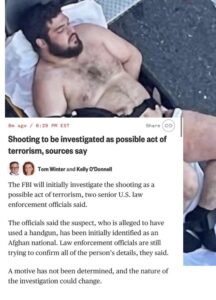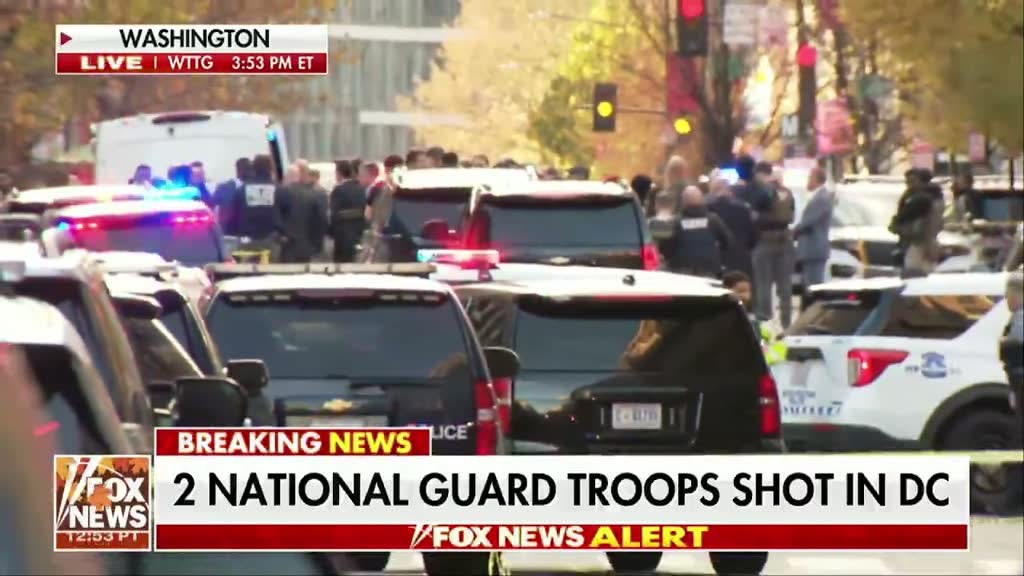A major development has emerged in the investigation surrounding the shocking shooting of two National Guardsmen in Washington, D.C. According to a new report from NBC News, federal officials have identified the suspected gunman as an Afghan national, raising serious questions about how he entered the country and what may have motivated the attack. The details are still being confirmed, but the implications are already reverberating across the nation.
Investigators are now treating the case as a possible act of terrorism, a shift that underscores the severity of the situation and the potential national-security failures that made it possible. Early reports indicate that the suspect allegedly used a handgun in the ambush-style attack that left the two Guardsmen fatally wounded—an incident that has stunned Americans and sent shockwaves through military communities.
NBC News reported that law enforcement officials are still working to verify the suspect’s full identity, immigration status, and background. However, the fact that the man has been “initially identified as an Afghan national” immediately raises a host of concerns about vetting, monitoring, and the policies that allowed him to be in Washington, D.C., in the first place.
This revelation has already ignited a political firestorm, especially given the Biden-era handling of immigration, refugee vetting, and the disastrous Afghanistan withdrawal that brought tens of thousands of inadequately screened individuals into the United States. Many critics had warned that weak oversight and politically driven shortcuts could eventually have deadly consequences.
Now, with two National Guardsmen murdered on American soil, those warnings look tragically prescient. The possibility that this attack may have been motivated by extremist ideologies—or by backlash to U.S. military policies—has forced investigators to widen their scope and examine whether the suspect had connections to foreign groups or domestic radical networks.
The investigation has become a test of federal competence. Agencies are racing to piece together the suspect’s digital footprint, travel history, and contacts, while also interviewing witnesses and analyzing surveillance footage. Authorities remain tight-lipped as they work to determine whether this was an isolated act or part of something larger.
As the facts continue to unfold, the incident adds fuel to a broader debate over national security and immigration. Critics argue that under President Trump, America had tighter vetting procedures, stronger border enforcement, and a zero-tolerance approach toward potential threats—policies that they say could have prevented exactly the kind of breach that may have led to this attack.
Supporters of Trump’s approach point out that this tragedy highlights why the United States must maintain strong borders, rigorous immigration controls, and aggressive counterterrorism efforts. They argue that political correctness and lax oversight have made America more vulnerable, leaving service members and law enforcement at greater risk.
Meanwhile, the families of the fallen Guardsmen—and the nation as a whole—are left demanding answers and accountability. The fact that the attack happened near the heart of the nation’s capital only intensifies the urgency of understanding what went wrong and ensuring it never happens again.
With the investigation still ongoing, the country now awaits confirmation of the suspect’s background and motive. But one thing is already clear: this horrific incident has reignited a national conversation about terrorism, immigration, and the stark difference between the strong security posture of the Trump administration and the dangerous failures that have emerged since.

